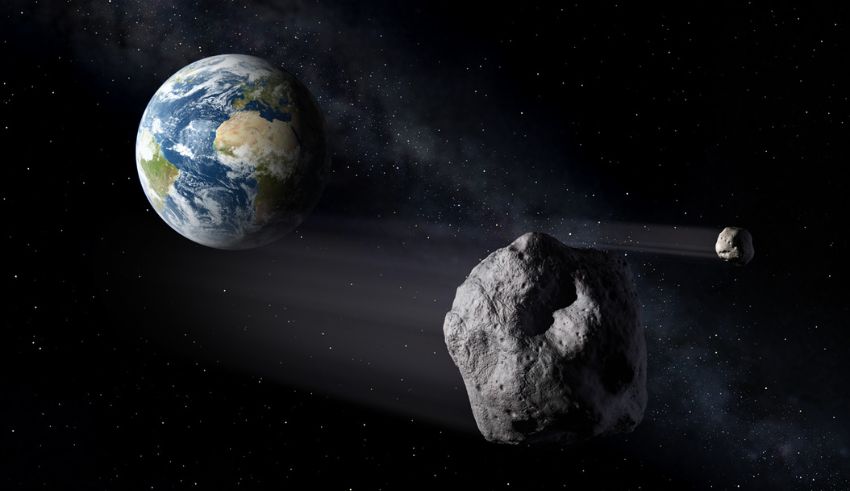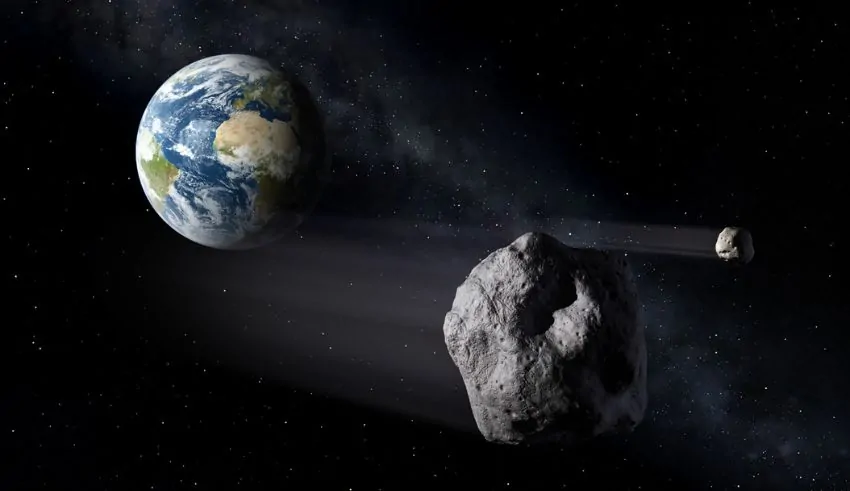

(C) Space.com
A possibly catastrophic asteroid named Apophis will reach its closest approach to Earth in just five years, about 19,000 miles away from our planet. Scientists believe that during this flyby Earth’s gravity could cause the asteroid to undergo what is known as “astroquakes,” or strong shaking or vibrations brought on by gravitational forces. These strong forces should fundamentally change the surface and structure of the asteroid. Here is what researchers are learning about Apophis and the possible consequences of Earth’s gravitational attraction.
The idea behind the possible “astroquakes” is based on gravitational tidal forces—that is, the unequal gravitational attraction one large object, like Earth, generates on a smaller object, such an asteroid. These tidal pressures produce stretching and tugging effects that might cause Apophis, sometimes known as the “God of Chaos” asteroid, severe trembling.
About the size of the Empire State Building, the Apophis asteroid is scheduled to pass through a region where Earth’s gravity will have a major effect. Two important physical processes on the asteroid expected to permanently alter its surface are projected to be driven by this gravitational contact.
Under the direction of Ronald-Louis Ballouz of the Johns Hopkins University Applied Physics Laboratory, scientists have simulated Apophis’s flyby and the physical changes it would experience upon approaching Earth’s gravitational field using computational models. The findings of their research point to two different occurrences may be happening:
The first physical step is the generation of severe seismic-like shocks most likely starting one hour before Apophis approaches its closest point to Earth. After the asteroid passes our planet, these vibrations should persist for some while. Although their exact strength is unknown, experts believe these “astroquakes” will be strong enough to knock big chunks from the surface of the asteroid far into space. The shaking might also cause Apophis to lose some of its surface material, therefore changing its look.
The second anticipated result is a change in the tumbling or rotating pattern of Apophis. Unlike planets, asteroids like Apophis rotate not exactly on an axis. Rather, they whirl wildly through space. Apophis may undergo landslides over tens of thousands of years as a result of Earth’s gravity perhaps weakening this motion. These landslides could disclose deeper layers of the asteroid as the surface moves, therefore changing its look and exposing more about its geological background.
Eventually, both of these mechanisms could rejuvenate and change Apophis’s surface, giving researchers vital information on the asteroid’s composition and architecture.
Although the asteroid won’t immediately endanger Earth, Apophis is sometimes referred to as a “city-killer” asteroid because of its great bulk and its destructive capability. Should it crash with Earth, the impact may release an energy equivalent to the detonation of hundreds of nuclear bombs, able to destroy whole cities and inflict extensive damage across great distances. Fortunately, with new research computing the likelihood at one in two billion, the chances of an impact in 2029 are rather low.
Apophis is still a topic of great research even though collision is somewhat rare. Since its detection in 2004, scientists have tracked its trajectory under first suspicions regarding a probable impact. Better observations have, however, greatly lessened the possibility of a direct collision in the near future. Closely monitored as a rare chance to investigate how gravitational forces from Earth can influence the physical properties of the asteroid is its flyby in 2029.
Apophis’s flyby in 2029 offers planetary scientists an unheard-of chance to view a near-Earth asteroid at close proximity. Set to rendezvous with the asteroid during this flyby, NASA’s OSIRIS-APEX mission will investigate Apophis for up to eighteen months. The spacecraft will record any physical changes the asteroid experiences in response to Earth’s gravitational pull, therefore giving scientists important new perspectives on asteroid behavior as they pass close to our planet.
Furthermore, this goal could support or disprove the theories put out by Ballouz and his colleagues by offering further data on how Earth’s gravity affects asteroids. With such thorough studies, scientists aim to better understand space weathering—the process by which an asteroid’s surface changes over time under exposure to the hostile environment of space.
Though Apophis’s effect on Earth is not predicted for at least the next 100 years, planetary defense scientists still give the asteroid great attention. The information acquired by tracking Apophis’s passage could have significant ramifications for creating plans to stop a future possible asteroid collision. Actually, before they ever get to Earth, NASA’s Planetary Defense Coordinating Office has been vigorously looking at means of deflecting or destroying dangerous asteroids.
Although we are secure for now, the knowledge gained from Apophis’s 2029 visit could form the basis for future asteroid avoidance plans, therefore assuring that mankind is better ready for any possible space hazards. Protecting our planet for next generations depends critically on ongoing observation of Apophis and other near-Earth objects.
Earth will see an unusual and amazing occurrence five years from now as the Apophis asteroid passes nearby. Just one of the many fascinating scientific events expected during this approach is the anticipated “astroquakes” brought on by Earth’s gravitational force. Data gathered as scientists investigate Apophis and other near-Earth objects will help us better grasp asteroid dynamics and increase our capacity to shield Earth from possible space risks going forward.
The Ministry of Foreign Affairs (MFA) in Singapore has upped its travel warning for Singaporeans by advising against travelling to…
With the aim of honoring the stellar performers and achievers in the music industry of South Korea, the yearly prestigious…
Children’s favourite and globally acclaimed ‘Cocomelon’ is known for their appealing animated videos which features nursery rhymes, educational songs, and…
ExecuJet MRO Services Malaysia has a reason to smile as its maintenance, repair and overhaul (MRO) received the Japan Civil…
Sony is known for catering premium quality in all types of electronics products they make for their users with their…
The European Union and Singapore agreed to a transformative Digital Trade Agreement which serves to deepen their economic relations through…
This website uses cookies.
Read More